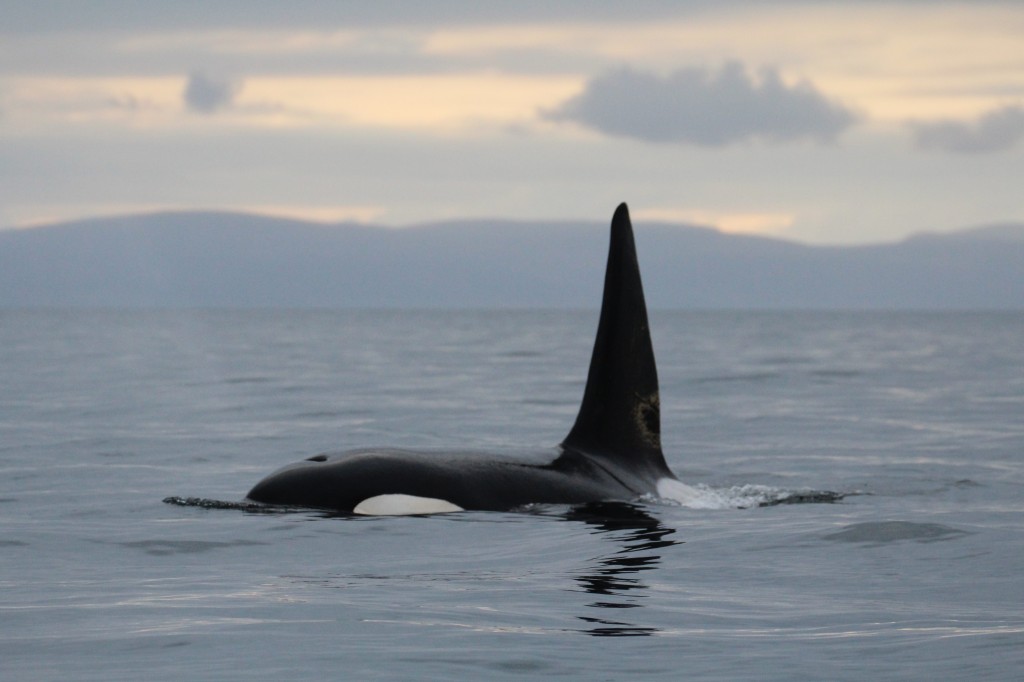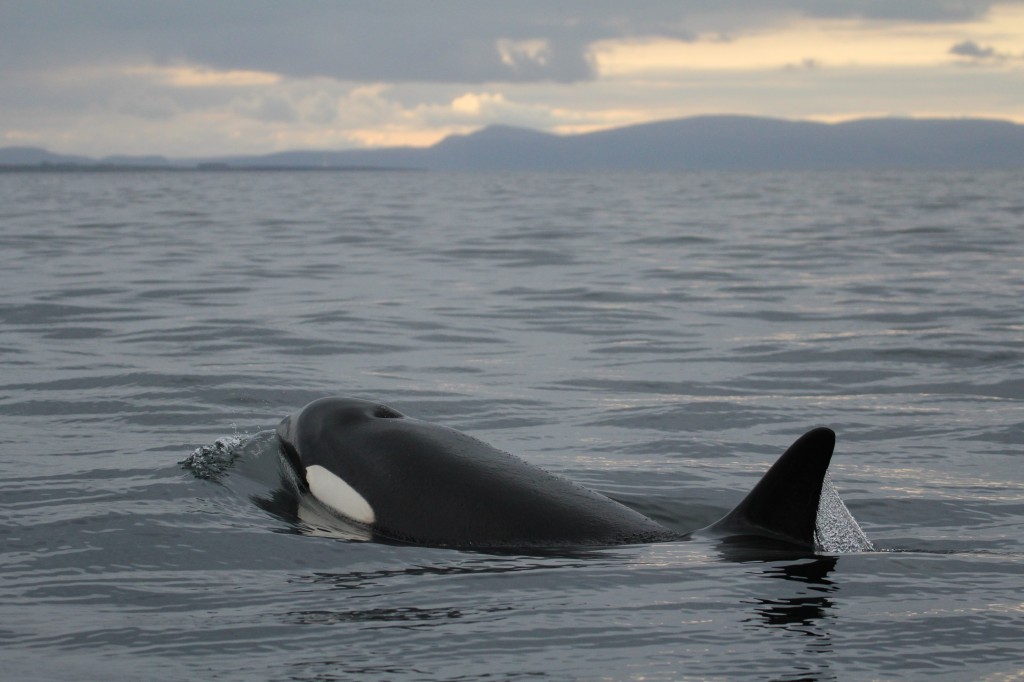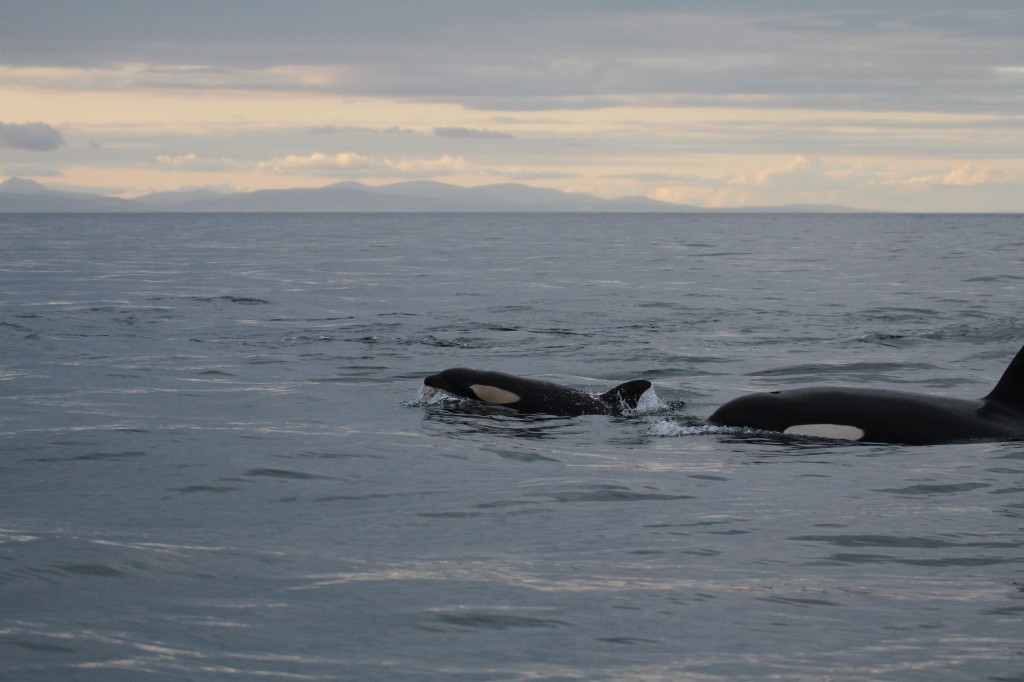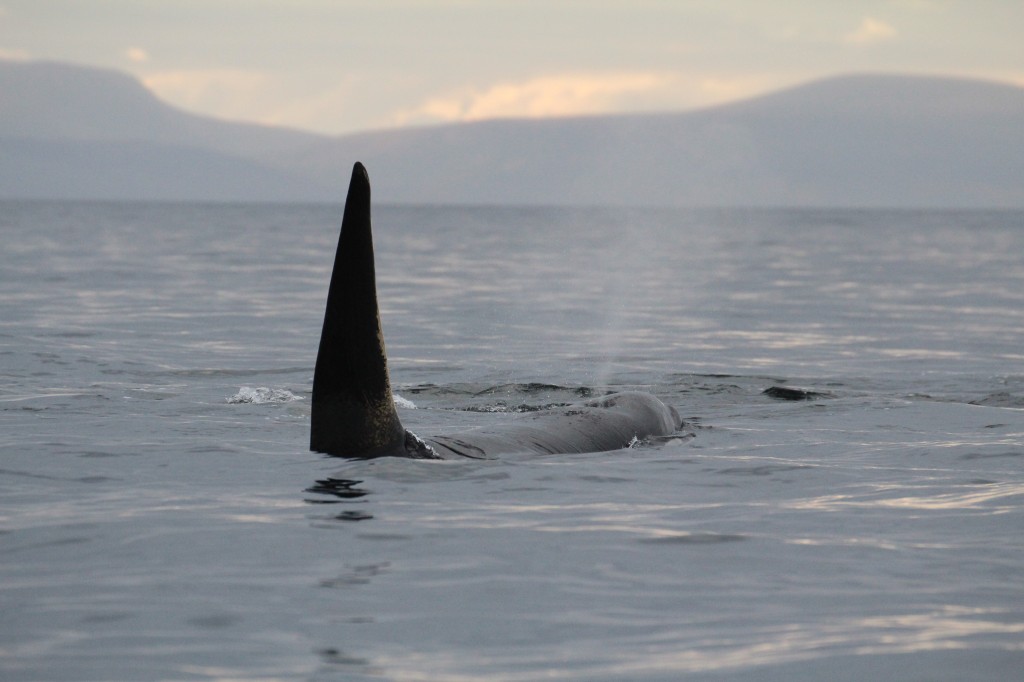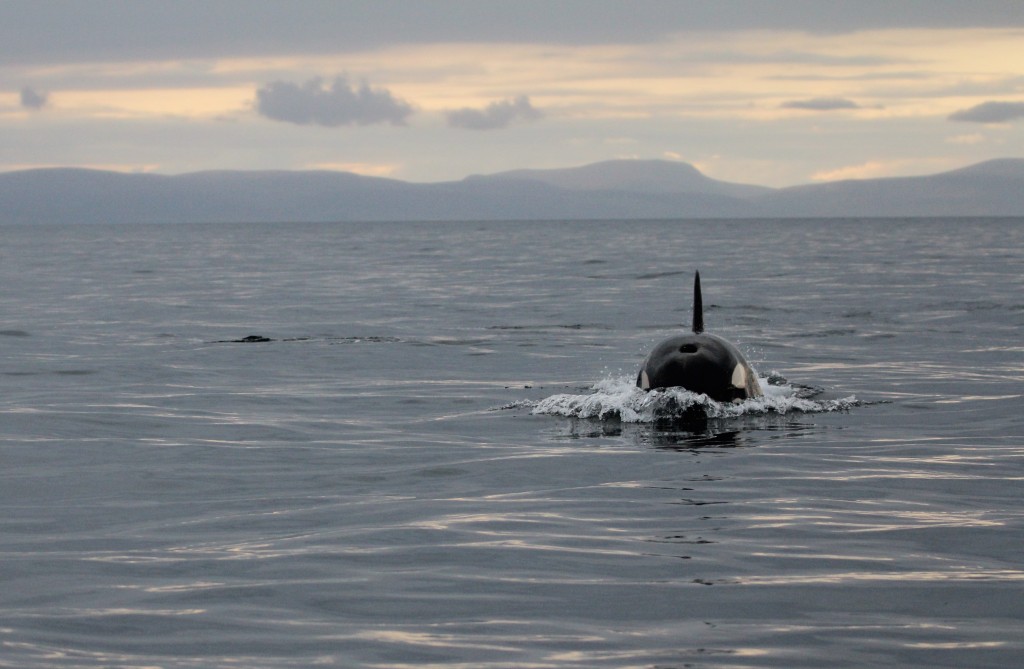It’s a very special time of year for a group of dedicated wildlife enthusiasts in the North of Scotland. Volunteers for the research charity Sea Watch Foundation are conducting their annual ‘Orca Watch’. Carefully planned to coincide with a yearly arrival of orca (more commonly known as killer whales) in the Pentland Firth, the team are poised to collect data about whales, dolphins and porpoises that utilise the waters in front of them.
This year there has been an unexpected turn, with a group of six killer whales also showing up at the same time in the Moray Firth, some 60 miles south of the strait that divides Orkney from mainland Scotland.
The animals were spotted just after 5pm on Monday evening by Sea Watch Regional Coordinator, Alan Airey. Alan is no stranger to recording some of the more striking whales and nimble dolphins as he regularly provides data on bottlenose dolphins using the area as well as minkes and occasional humpback whales. On this occasion, Alan was able to notify other observers over social media and local wildlife trip boat operator, North 58, was able to head to the area to check out the action.
Orca 993 is amongst the group of Icelandic killer whales photographed in the Moray Firth.
Photo by Pippa Low, North 58° Sea Adventures.
Aside from witnessing these stunning animals, most famously known from the shores of western North America, Patagonia, Norway, and New Zealand, the boat crew were able to take a series of awesome pictures too! As one of Sea Watch Foundation’s Recommended Boat Operators, North 58 know how to respectfully approach and view the animals and that is evident from their images too, as the animals could easily have swam off if they felt disturbed.
“I had just got back to Findhorn Marina, cleaning up after a busy day on the water, when I get a call from Alan Airey …..”Orca in the firth!” So we squeezed out of Findhorn on the low tide and headed across the Firth towards Portmahomack lighthouse- expertly directed by Adele Sutherland and Alan Airey (and the rest of the team) from Burghead. We encountered the pod at approximately 8pm, 7 miles North west of Findhorn, and captured footage and photos (including ID) of the pod as they swam Westwards into the Firth. It is the same pod seen by Caithness sea watching last week and everyone up for Orca watch on Sunday” tells Pippa Low from North 58 and photographer of the fantastic images.
One of the killer whales seen in the Moray Firth. Identified as IS172, confirmed as a young male from a genetic study by the Icelandic Orca Project. Photo by Pippa Low, North 58° Sea Adventures.
Having seen the photographs on Facebook, the Icelandic Orca Project commented to say that this may well be the furthest south along the East coast of the UK that killer whales from the Icelandic population have been recorded; this was later confirmed in email correspondence with Sea Watch’s Sightings Officer, Kathy James.
“Although this sighting is now the furthest south that individuals from the Icelandic population have been confirmed, other killer whale sightings have occurred in the Moray Firth and further south on many occasions. It may well be that amongst these, were unidentified Iceland killer whales. One must remember that clear photographic evidence is required to recognise individual orcas” says Kathy.
“We don’t know very much about the movements of killer whales around Britain. Members of a pod that has numbered up to fourteen can be seen annually around the Hebrides of west Scotland, mainly in summer. The most famous of these is a mature male nicknamed “John Coe” that we have observed since at least 1980. It has a distinct nick towards the base of the dorsal fin making it instantly recognisable and a chunk out of its tail (possibly a shark bite). Sightings of John Coe have ranged from the Hebrides over to East Scotland, south to the northwest coast of Ireland and well into the Irish Sea off West Wales – a true wanderer,” added Dr Peter Evans, Founder and Director of Sea Watch.
Icelandic Orca 997 with a calf. Photo by Pippa Low, North 58° Sea Adventures.
Dr. Filipa Samarra of the Icelandic Orca Project has confirmed that amongst the Moray Firth sighting were catalogue numbers 993, IS172 and IS408. The killer whales are catalogued according to unique dorsal fin shapes as well as the shape of their flank markings. Similar catalogues exist around the UK, and 993 is also included here, although it is known as 062. The project is waiting to obtain more pictures before confirming whether any more known animals were amongst the group.
Killer whale (993) with blow. Photo by Pippa Low, North 58° Sea Adventures.
Dr Andy Foote, of Aberdeen University, added to the discussion “We do have a catalogue of almost 100 individuals, including those from the West Coast Community. We have identified roughly 50 individuals (it varies depending on annual deaths and births) that are sighted each year around the Northern Isles and Caithness, with occasional sightings of these individuals off the west coast, for example St Kilda and North Rona. We also know that their diet includes seals, and occasionally sea birds. Some groups have been repeatedly resighted in Iceland, with photographic matches dating back to at least the 1990s. We also have photo-id matches of one group that is regularly sighted around Scotland with the Faroe Islands in different years. And we also now have insights into the social structure between these individuals. The research work around Scotland started in earnest in 2006 as part of my PhD studies and was recently boosted by Filipa’s work to compare catalogues between Iceland and Scotland. Whilst some of this work was done through dedicated research fieldwork, it was made possible by the ‘citizen science’ of many who volunteered their photographs from opportunistic encounters. The Caithness Seawatching group, and in particular Karen Munro and Colin Bird, have made a huge contribution to that research.”
Advancing killer whale. Photo by Pippa Low, North 58° Sea Adventures.
Orca Watch continues on the north coast until Saturday, but people all around Scotland and the rest of UK are reminded to log their sightings (of whales, dolphins and porpoises) year round at www.seawatchfoundation.org.uk/sightingsform. Anyone who would be interested in spending more time looking for these creatures of the deep should visit the Orca Watch webpage (www.seawatchfoundation.org.uk/orca-watch-2016) or contact Sea Watch’s Sightings Officer at kathy.james@seawatchfoundation.org.uk.

